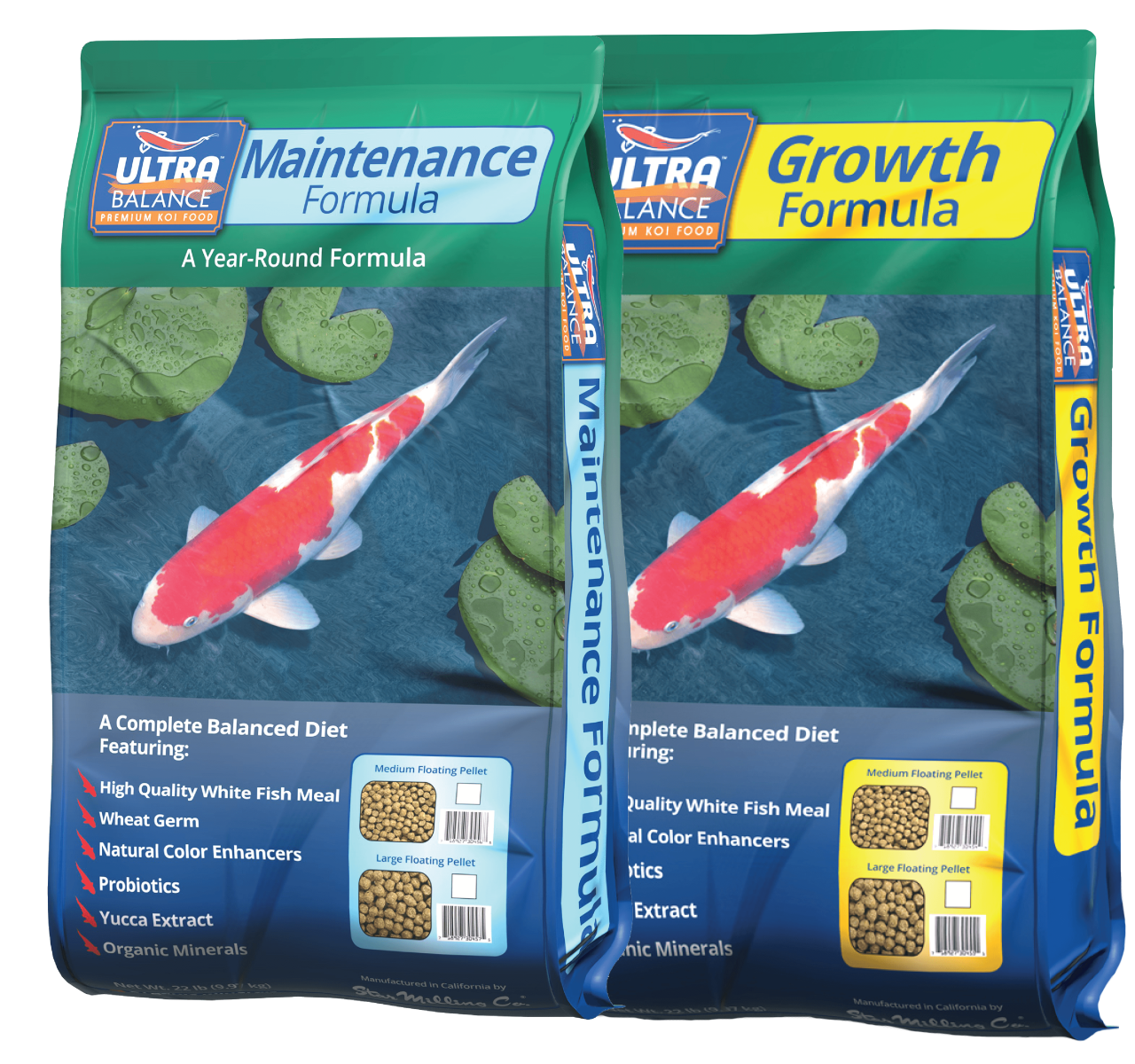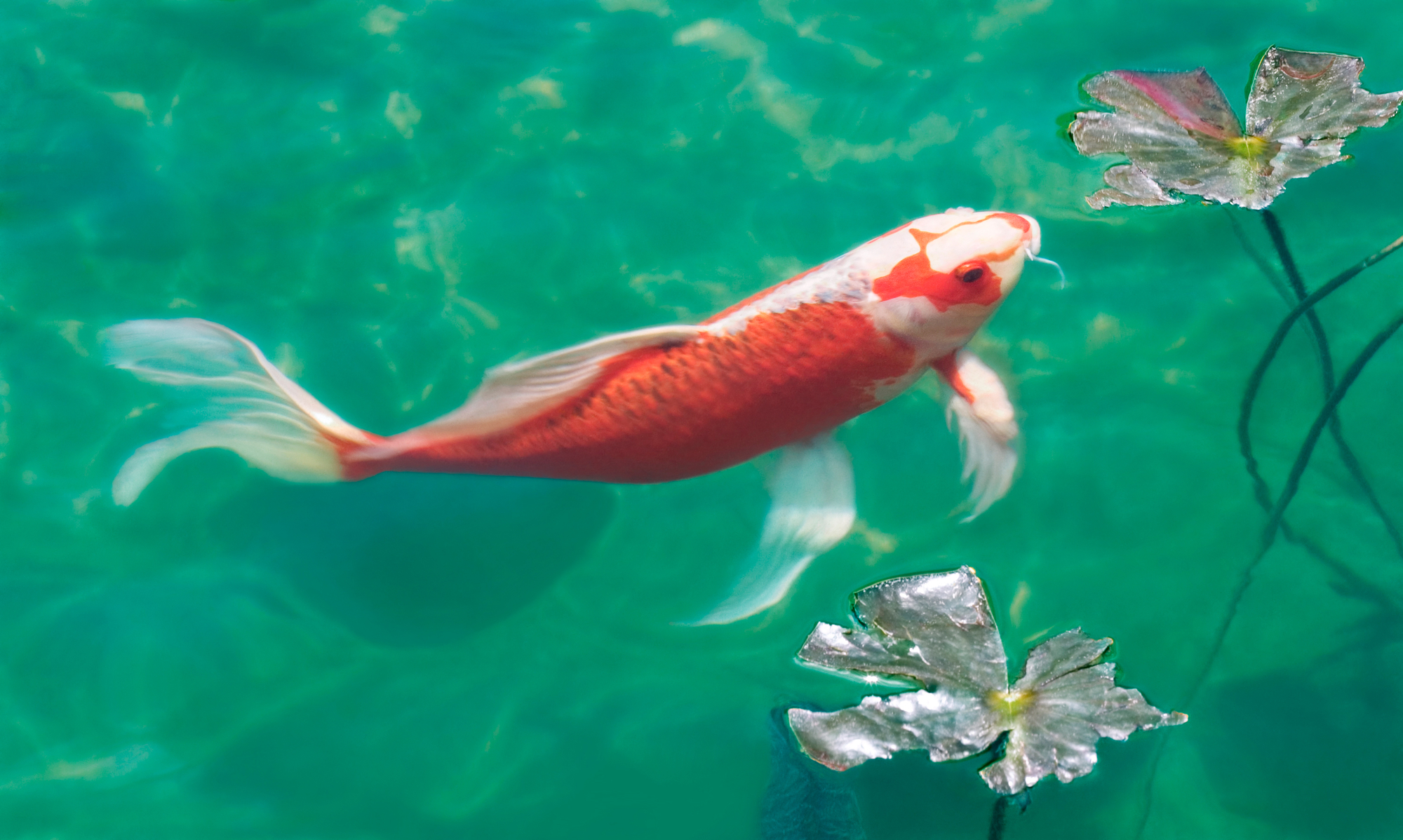Frequently Asked Questions About Koi
Curious about caring for koi fish? Our Koi FAQ page answers the most common questions about feeding, health, pond care, and more. Whether you’re new to koi keeping or looking to fine-tune your routine, this guide offers quick, reliable information to help your koi thrive.
General Information
What are koi fish?
Koi are a domesticated and ornamental variety of the common carp (Cyprinus carpio) known for their bright colors and patterns.
What is the lifespan of a koi fish?
Koi can live 20-30 years on average, but with proper care, some can live over 50 years or more.
What do koi fish symbolize?
Koi are often seen as symbols of good luck, prosperity, strength, and perseverance, especially in Japanese and Chinese cultures.
Care & Habitat
How big do koi fish grow?
Koi can grow up to 2-3 feet long depending on their genetics, environment, and diet.
What size pond is recommended for koi fish?
A minimum of 1,000 gallons is recommended, with at least 250 gallons per adult koi. Depth should ideally be 3-5 feet to prevent freezing in winter and overheating in summer.
Can koi be kept in an aquarium?
Koi can be kept in large indoor aquariums when they are very young, but as they grow, they need a large outdoor pond to thrive and develop properly.
Do koi fish need a filter system?
Yes, koi can produce a lot of waste especially if fed a lower digestible diet, so a good filtration system is essential for maintaining water quality. In overcrowded pond environments, we recommend feeding our highly digestible Ultra Balance Premium Wheat Germ Maintenance diet.
Diet & Feeding
What do koi fish eat?
Koi are omnivores and eat a diet of high-quality pellets, vegetables (like lettuce and peas), fruits, and sometimes insects. Specialized koi food is ideal for their health such as the nutritionally balanced Ultra Balance Premium Koi foods.
How often should I feed my koi?
Feed koi 1-2 times a day during warm weather (64°F and above) and only what they can eat in about 5 to15 minutes. We recommend feeding the Ultra Balance Premium Koi Growth diet for fish 2 years and younger during water temperatures of 64°F and above.
For water temperatures below 64°F, feed Ultra Balance Premium Wheatgerm Maintenance diet. In cold weather (below 50°F), feeding should stop as their metabolism slows down. However, if you have warmer days during the winter and spring, you may provide the Ultra Balance Premium Wheatgerm Maintenance diet in small quantities.
Can koi eat bread?
While koi might eat bread, it is not recommended as it can cause digestive issues. Stick to koi-friendly food.
Behavior
Why are my koi hiding?
Koi may hide due to stress, predators, sudden changes in water quality, or a new environment.
Do koi fish recognize their owners?
Yes, koi can recognize their caretakers over time and may even come to the surface when they see you.
Why do koi jump out of the water?
Koi may jump due to poor water quality, lack of oxygen, stress, or simply exploring their environment.
Health & Maintenance
How do I keep koi fish healthy?
Ensure clean water, maintain stable water temperature, feed a nutritionally balanced diet such as Ultra Balance Premium Koi food, and monitor for signs of illness or parasites. Ultra Balance Premium Koi foods contain natural prebiotics, Mannon Oligosaccharides and Saccharomyces Cerevisae to promote a healthy digestive system and improve the immune system.
What are common diseases in koi?
Koi may suffer from bacterial infections, parasites, fungal infections, and ulcers. Ich (white spot disease) and fin rot are also common.
Why is my koi fish turning white or losing color?
This can happen due to aging, stress, poor diet, or changes in water quality. Ultra Balance Premium Koi foods contain natural color enhancers, spirulina, marigold extract and shrimp meal for improved coloring of koi fish and organic minerals for improved water quality.
How do I prevent algae in my koi pond?
Maintain proper filtration, avoid overfeeding, add aquatic plants, and limit sunlight exposure to the pond. Ultra Balance Premium Koi food diets include organic minerals and yucca extract to increase digestibility and reduce ammonia excretion which will reduce algae growth.
Breeding
Do koi fish lay eggs?
Yes, koi are egg layers. They typically spawn in the spring when water temperatures rise above 68°F (20°C).
How can I tell if my koi are male or female?
Females are generally larger and rounder, especially during the breeding season, while males are slimmer and may develop breeding tubercles on their gill plates.
How many eggs do koi lay?
A single female koi can lay thousands of eggs, but not all will hatch or survive.
Pond & Seasonal Care
Can koi survive winter in a pond?
Yes, if the pond is deep enough (at least 3 feet) and does not freeze completely. Aerators or pond heaters can help maintain oxygen levels.
How do I prepare my koi pond for winter?
Stop feeding koi when water temperatures drop below 50°F (10°C), clean the pond, and ensure there’s an aerator or deicer to prevent the water from freezing solid.
Can koi live with other fish?
Yes, koi are generally peaceful and can coexist with goldfish, plecos, and other large pond fish.
How often should I clean my koi pond?
A partial water change (10-20%) should be done every week or two. A full clean may only be needed yearly, depending on the filtration system you’re using and your maintenance schedule.
Ultra Balance
Premium Maintenance Formula
A year-round diet that provides complete and balanced nutrition for mature fish over 2 years of age. Also an ideal formula for feeding any age koi in water below 64°F or in crowded pond conditions.

Ultra Balance
Premium Growth Formula
Formulated for optimum growth of young koi in water 64°F and above. It is a complete and nutritionally balanced diet providing the 5 key nutrients for optimal growth, health, and performance of your koi.

